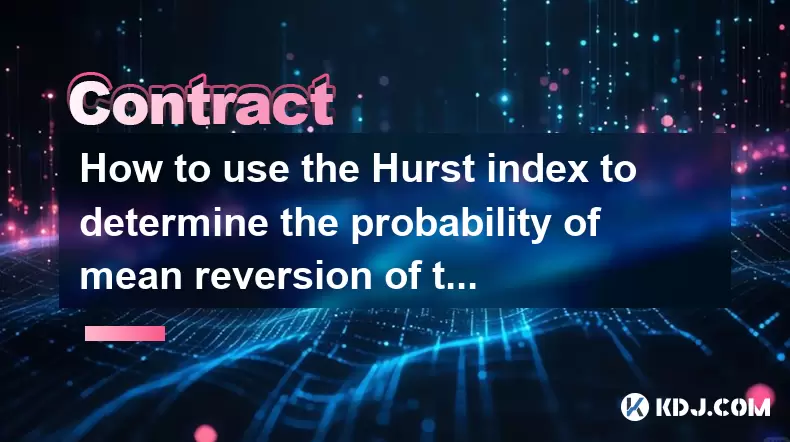-
 Bitcoin
Bitcoin $118900
1.66% -
 Ethereum
Ethereum $3735
1.35% -
 XRP
XRP $3.506
0.71% -
 Tether USDt
Tether USDt $1.000
-0.01% -
 BNB
BNB $799.4
5.78% -
 Solana
Solana $202.0
1.87% -
 USDC
USDC $0.9999
0.00% -
 Dogecoin
Dogecoin $0.2661
1.89% -
 Cardano
Cardano $0.8877
1.59% -
 TRON
TRON $0.3173
2.45% -
 Hyperliquid
Hyperliquid $45.00
2.59% -
 Stellar
Stellar $0.4723
3.40% -
 Sui
Sui $3.970
1.32% -
 Chainlink
Chainlink $19.67
1.94% -
 Hedera
Hedera $0.2710
1.99% -
 Avalanche
Avalanche $25.74
-0.01% -
 Bitcoin Cash
Bitcoin Cash $528.1
1.98% -
 Litecoin
Litecoin $120.1
3.57% -
 Shiba Inu
Shiba Inu $0.00001525
1.26% -
 UNUS SED LEO
UNUS SED LEO $8.989
-0.01% -
 Toncoin
Toncoin $3.304
1.74% -
 Polkadot
Polkadot $4.531
3.38% -
 Uniswap
Uniswap $10.74
2.51% -
 Ethena USDe
Ethena USDe $1.001
0.00% -
 Monero
Monero $325.5
2.44% -
 Pepe
Pepe $0.00001413
1.31% -
 Bitget Token
Bitget Token $4.860
0.85% -
 Dai
Dai $0.9999
0.01% -
 Aave
Aave $307.3
-2.07% -
 Bittensor
Bittensor $448.8
2.91%
How to use the Hurst index to determine the probability of mean reversion of the contract?
The Hurst index helps crypto traders identify trending or mean-reverting behavior in price data, guiding strategy decisions for futures and perpetual contracts.
Jun 18, 2025 at 11:07 pm

Understanding the Hurst Index in Cryptocurrency Trading
The Hurst index, also known as the Hurst exponent, is a statistical tool used to determine the long-term memory of time series data. In the context of cryptocurrency contracts, it helps traders assess whether the price movement exhibits trends, randomness, or mean reversion. This becomes crucial when evaluating mean-reverting probabilities in futures and perpetual contracts.
In crypto trading, understanding whether an asset is trending or mean-reverting can significantly impact strategy performance. The Hurst index ranges between 0 and 1. A value close to 0.5 suggests random walk behavior, while values above 0.5 indicate persistence (trending), and values below 0.5 suggest anti-persistence (mean reversion). For contract traders, this insight can be leveraged to decide whether to adopt trend-following strategies or range-bound trading systems.
Step-by-Step Calculation of the Hurst Index
To apply the Hurst index effectively, one must first calculate it using historical price data from the relevant cryptocurrency contract:
- Collect Historical Price Data: Obtain a sufficient sample size of historical closing prices for the contract you're analyzing (e.g., BTC/USDT perpetual futures).
- Divide the Time Series into Intervals: Split the dataset into multiple intervals of equal length to compute rescaled ranges.
- Compute the Mean: For each interval, calculate the average price over that period.
- Demean the Prices: Subtract the mean from each price point within the interval to get deviations.
- Calculate the Cumulative Deviation: Sum up the demeaned values cumulatively across the interval.
- Determine the Range (R): Find the difference between the maximum and minimum cumulative deviation in the interval.
- Compute Standard Deviation (S): Calculate the standard deviation of the original prices in the interval.
- Rescale R/S: Divide the range by the standard deviation for each interval.
- Logarithmic Transformation: Take the logarithm of both the interval size and the rescaled range.
- Regression Analysis: Perform linear regression on the log-log plot of interval size vs. rescaled range; the slope of the line is the Hurst exponent.
This process yields the Hurst value, which serves as the basis for assessing mean reversion probability.
Interpreting Hurst Values for Contract Trading
Once the Hurst index has been calculated, interpretation is key. Here's how to decode the results:
- H ≈ 0.5: Indicates a random walk, where future price movements are independent of past behavior. Contracts with such readings may not be ideal for either trend or mean reversion strategies.
- H > 0.5: Suggests persistent behavior — if the price has been rising, it’s likely to continue doing so. Traders might lean toward trend-following approaches during these periods.
- H < 0.5: Implies anti-persistent behavior — the market tends to reverse direction after a move. This is the zone where mean reversion strategies perform best, particularly in volatile crypto markets.
For example, if the Hurst index for ETH/USD perpetual futures drops below 0.4 during a consolidation phase, it signals a strong possibility of mean reversion, prompting traders to consider counter-trend entries near support and resistance levels.
Applying Hurst-Based Insights to Real Contracts
Let’s take a practical scenario involving the BTC/USDT perpetual contract on a major exchange like Binance. Suppose the trader notices that the price has entered a tight range following a sharp rally. To determine whether this is a consolidation before another leg up or a reversal setup, they calculate the Hurst index over the last 100 candles (1-hour timeframe).
If the resulting Hurst value is 0.38, it indicates anti-persistence, suggesting that any breakout attempt is likely to fail and revert back into the range. Based on this, the trader could set up short positions near resistance with stop-losses above the recent swing high, anticipating a pullback.
Conversely, if the Hurst index rises to 0.72 during a sustained downtrend, it implies that bearish momentum is likely to persist, supporting a short bias with trailing stops.
This real-time application allows traders to dynamically adjust their strategies based on the evolving nature of the contract's price action.
Combining Hurst Index with Other Indicators
While the Hurst index offers valuable insights into market behavior, it should not be used in isolation. Combining it with other technical indicators enhances its predictive power:
- Bollinger Bands: Use Bollinger Bands to identify overextended moves and combine them with low Hurst values to confirm potential mean reversion setups.
- RSI: When the Hurst index suggests mean reversion and RSI shows oversold or overbought conditions, the confluence increases trade conviction.
- Volume Profile: High-volume nodes can act as strong support/resistance zones; aligning them with Hurst-based reversals can improve entry timing.
- Moving Averages: Use moving averages to filter out false signals during trending phases identified by higher Hurst values.
By integrating these tools, traders can develop robust frameworks tailored to contract-specific behaviors in fast-moving crypto markets.
Frequently Asked Questions
Q: Can the Hurst index be applied to all types of cryptocurrency contracts?
Yes, the Hurst index can be applied to various types of cryptocurrency contracts including perpetual futures, quarterly futures, and options. However, the effectiveness may vary depending on liquidity and volatility characteristics of the specific contract.
Q: How often should I recalculate the Hurst index for a given contract?
It depends on your trading frequency and time frame. Day traders may recalculate it every few hours, while swing traders might update it daily or weekly to capture shifts in market behavior.
Q: Is the Hurst index affected by the choice of time frame?
Absolutely. The Hurst index can yield different results across time frames. Shorter time frames (like 5-minute charts) may show more noise and lower Hurst values, while longer time frames (like daily charts) may reveal clearer trends or mean reversion tendencies.
Q: Are there any software tools that automatically calculate the Hurst index?
Yes, platforms like Python (using libraries like NumPy and pandas), MATLAB, and certain tradingView scripts allow for automated calculation of the Hurst index. These tools can streamline the analysis process for traders.
Disclaimer:info@kdj.com
The information provided is not trading advice. kdj.com does not assume any responsibility for any investments made based on the information provided in this article. Cryptocurrencies are highly volatile and it is highly recommended that you invest with caution after thorough research!
If you believe that the content used on this website infringes your copyright, please contact us immediately (info@kdj.com) and we will delete it promptly.
- Binance, Leverage, and Perpetual Contracts: A Trader's Deep Dive
- 2025-07-23 16:50:12
- Tom Lee's Bold Bitcoin Prediction: $250K by '25 or $3M Long Term?
- 2025-07-23 16:30:12
- VeChain (VET) Price Prediction: Bullish Breakout or Short-Term Skepticism?
- 2025-07-23 16:50:12
- Jackbit Casino: Your Ticket to Crypto Bonuses and Free Spins in 2025
- 2025-07-23 16:30:12
- Navigating the High-Risk Crypto Seas: Trader Strategies in 2025
- 2025-07-23 16:55:11
- ONDO ETF Incoming? 21Shares and the Coinbase Custody Connection
- 2025-07-23 14:30:12
Related knowledge

Why is my Bitstamp futures position being liquidated?
Jul 23,2025 at 11:08am
Understanding Futures Liquidation on BitstampFutures trading on Bitstamp involves borrowing funds to open leveraged positions, which amplifies both po...

Does Bitstamp offer inverse contracts?
Jul 23,2025 at 01:28pm
Understanding Inverse Contracts in Cryptocurrency TradingIn the realm of cryptocurrency derivatives, inverse contracts are a specific type of futures ...

How to find your Bitstamp futures trade history?
Jul 23,2025 at 08:07am
Understanding Bitstamp and Futures Trading AvailabilityAs of the current state of Bitstamp’s service offerings, it is critical to clarify that Bitstam...

Can I use a trailing stop on Bitstamp futures?
Jul 23,2025 at 01:42pm
Understanding Trailing Stops in Cryptocurrency TradingA trailing stop is a dynamic type of stop-loss order that adjusts automatically as the price of ...

How to trade ETH perpetuals on Bitstamp?
Jul 23,2025 at 03:28am
Understanding ETH Perpetual ContractsETH perpetual contracts are derivative products that allow traders to speculate on the price of Ethereum without ...

How to transfer funds to Bitstamp futures wallet?
Jul 23,2025 at 04:14pm
Understanding Bitstamp Futures WalletBefore initiating any transfer, it’s crucial to understand that Bitstamp separates your Spot Wallet from your Fut...

Why is my Bitstamp futures position being liquidated?
Jul 23,2025 at 11:08am
Understanding Futures Liquidation on BitstampFutures trading on Bitstamp involves borrowing funds to open leveraged positions, which amplifies both po...

Does Bitstamp offer inverse contracts?
Jul 23,2025 at 01:28pm
Understanding Inverse Contracts in Cryptocurrency TradingIn the realm of cryptocurrency derivatives, inverse contracts are a specific type of futures ...

How to find your Bitstamp futures trade history?
Jul 23,2025 at 08:07am
Understanding Bitstamp and Futures Trading AvailabilityAs of the current state of Bitstamp’s service offerings, it is critical to clarify that Bitstam...

Can I use a trailing stop on Bitstamp futures?
Jul 23,2025 at 01:42pm
Understanding Trailing Stops in Cryptocurrency TradingA trailing stop is a dynamic type of stop-loss order that adjusts automatically as the price of ...

How to trade ETH perpetuals on Bitstamp?
Jul 23,2025 at 03:28am
Understanding ETH Perpetual ContractsETH perpetual contracts are derivative products that allow traders to speculate on the price of Ethereum without ...

How to transfer funds to Bitstamp futures wallet?
Jul 23,2025 at 04:14pm
Understanding Bitstamp Futures WalletBefore initiating any transfer, it’s crucial to understand that Bitstamp separates your Spot Wallet from your Fut...
See all articles

























































































